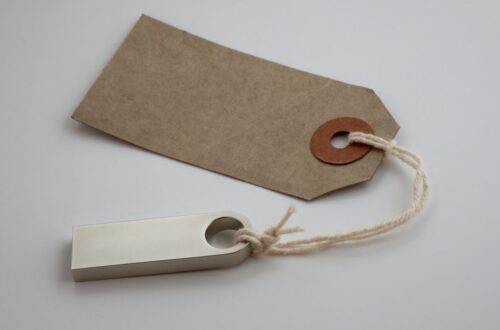
How I Earned Passive Income Selling Digital Products
When I first ventured into selling digital products, the allure of passive income caught my attention. Like many, I dreamed of earning money while I slept or sipped coffee at my favorite café. But the reality wasn’t as simple as uploading a product and watching the money roll in. It took effort, strategy, and a lot of learning along the way. Here’s my story of how I built a steady stream of passive income by selling digital products and the lessons I learned along the way.
The Idea Phase: Identifying a Niche
The first challenge was figuring out what to sell. I knew that the key to success in digital products was finding a niche with demand, but not oversaturated. I considered several options—eBooks, design templates, online courses—but I ultimately settled on selling social media templates for small businesses.
Why social media templates? Well, I had some experience with graphic design, and I noticed that small businesses often struggled with creating visually appealing content. They didn’t have the budget to hire a designer but needed to maintain a professional look online. Templates were a perfect solution: easy to use, time-saving, and customizable for different industries.
Lesson Learned: Focus on solving a problem in a niche you’re familiar with. You don’t need to be an expert, but having some knowledge helps when creating something valuable.
Product Creation: Building a High-Quality Offering
The next step was product creation. This was the most time-intensive part, but I knew I had to create something truly valuable if I wanted to attract buyers. I spent about two months designing my first collection of 30 social media templates using Canva, a tool that offers a wide variety of customizable templates and an easy-to-use interface. Each template was customizable, came with instructions, and catered to a range of business types—cafes, fitness trainers, boutiques, and more.
I made sure the designs were clean, modern, and aligned with current social media trends. I also included different formats (e.g., square for Instagram, portrait for stories, landscape for Facebook) so the templates could be used across platforms.
Lesson Learned: Don’t rush product creation. The quality of your digital product is what will set you apart from competitors and make customers willing to pay.
Setting Up a Selling Platform
Once I had my products ready, the next challenge was figuring out where to sell them. After researching different platforms, I chose Etsy as my primary marketplace. It’s well-known for digital goods and had an existing audience looking for templates like mine. Plus, Etsy handles a lot of the heavy lifting, like payment processing and customer service, allowing me to focus on creating and marketing my products.
I also considered platforms like Creative Market and Gumroad, but I wanted to start with just one marketplace to simplify things. Later, I planned to expand to more platforms once I gained traction.
Lesson Learned: Start with a platform that already has an established audience for your type of product. It saves time and reduces the effort needed to drive traffic initially.
Pricing: Finding the Sweet Spot
Pricing digital products can be tricky. Set the price too high, and you might scare off potential buyers. Too low, and you risk devaluing your work. After checking out competitors’ pricing, I settled on selling each template pack for $25.
I knew that this price was fair for the amount of work I had put in and the value I was offering. Plus, I had plans to create bundles in the future, which would allow me to sell at a higher price point without extra work.
Lesson Learned: Don’t underprice your work. Research your competitors, evaluate the value of your product, and choose a price that reflects that value. You can always experiment with pricing later on.
Marketing: Getting the Word Out
After listing my products on Etsy, I quickly realized that just having a great product wasn’t enough. I needed traffic. That’s where marketing came in.
- Pinterest: Since my products were highly visual, I decided to focus on Pinterest to drive traffic. I created visually engaging pins for each template pack and linked them back to my Etsy store. Over time, Pinterest became one of my largest traffic sources.
- Instagram: I also used Instagram to showcase how businesses could use my templates. I posted regularly, showing before-and-after examples of posts created with my templates and offering design tips. I also used relevant hashtags to reach small business owners.
- Email Marketing: I set up a simple email list using Mailchimp, where I offered a free template in exchange for sign-ups. This helped me build a list of potential customers who I could notify about new products or sales.
Lesson Learned: Marketing is crucial for selling digital products. You can have the best product in the world, but if no one knows about it, you won’t make sales. Focus on platforms where your target audience is most active.
Scaling: Expanding My Product Range
Once I saw that my initial templates were selling consistently, I decided to create more. I expanded my range to include holiday-themed templates, industry-specific packs (like fitness and real estate), and even started offering bundles at a higher price point.
The best part? Once the product was created and listed, I didn’t need to do much else besides handling the occasional customer question. The sales started to feel truly passive.
To diversify my income streams further, I also began selling digital planners and content calendars. These complemented my template business and gave me more ways to attract different types of customers.
Lesson Learned: Don’t stop with just one product. Once you’ve created a successful digital product, consider how you can expand or diversify your offerings. It’s a great way to scale your income without drastically increasing your workload.
Results: The Numbers
Now for the part everyone is curious about—how much money I made.
In the first few months, I was making around $300 per month. This was with minimal marketing and only a handful of products. As I created more templates and improved my marketing efforts, my monthly income grew to around $1,200 per month after six months. By the end of the first year, I had earned around $12,000 in passive income from selling digital products.
What surprised me the most was how consistent the income was. Sure, there were slower months, but overall, it felt like a reliable stream of income that didn’t require constant attention once the product was live.
Lesson Learned: Earning passive income from digital products is very possible, but it takes upfront effort. Once you’ve established your product and marketing strategy, the rewards can be steady and sustainable.
Selling digital products was one of the best decisions I made for earning passive income. It allowed me to leverage my skills in graphic design, help small businesses, and generate income while working on other projects. The key is to focus on quality, solve a specific problem, and market effectively. While it’s not a “set it and forget it” system at first, the effort pays off in the long run.
If you’re thinking about selling digital products, don’t wait. Start small, experiment, and adjust as you go. With the right approach, passive income from digital products can become a realistic and rewarding part of your financial journey.




